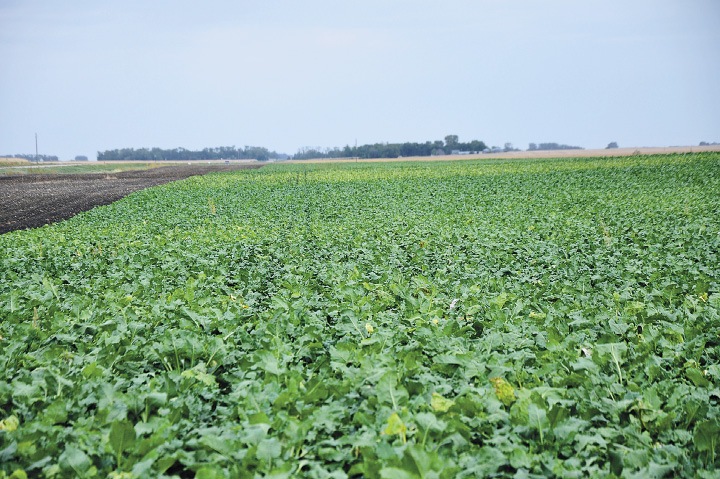 Sugarbeet growers in North Dakota, Minnesota and most other sugarbeet producing states had a phenomenal sugarbeet crop in 2012 despite relatively low amounts of rainfall.
Sugarbeet growers in North Dakota, Minnesota and most other sugarbeet producing states had a phenomenal sugarbeet crop in 2012 despite relatively low amounts of rainfall.
In North Dakota and Minnesota, growers had record-high sugar concentration and high yields. American Crystal Sugar Company growers averaged 19.14 percent sugar concentration and 27.1 tons/acre, Minn-Dak Farmers Cooperative averaged 19.1 percent sugar concentration and 26.7 tons/acre. Southern Minnesota Beet Sugar Cooperative averaged 17.69 percent sugar concentration and 26.4 tons/acre. The beet placed in piles from the 2012 harvest was very clean and with cold temperatures in January and February should result in good storage and efficient processing. If the price for sugar is favorable, growers should be in a good position to have a profitable 2012 sugarbeet crop.
Sugarcane producters in many countries, including Brazil and Thailand, also had good crops in 2012, resulting in lots of available sugar. The current world market price for sugar is declining. What can we learn from the recent sugarbeet crop, and what strategies can we use to produce a good crop in 2013 and prepare for possible lower sugar prices?
The yield potential of a sugarbeet crop is initially determined by plant population, time of planting and later influenced by stress from pests and diseases. Field research showed that a plant population of 175 to 225 evenly spaced plants per 100 feet of 22-inch rows planted as early as feasible produces the highest recoverable sucrose.

In 2012, most fields in North Dakota and Minnesota were planted before the end of April and had recommended plant populations and adequate moisture, resulting in uniform emergence. During the 2012 growing season, especially after planting, there was not much rainfall and soils warmed up relatively early. There was adequate moisture for germination and emergence, followed by rapid root growth to tap sub-surface moisture.
Plant stands were not impacted by heavy winds, soil crust formation or early season pests. Thus, very little re-planting was needed. The relatively few rainfall events early in the season resulted in growers not being hampered in timely application of herbicides, most of which was glyphosate because 97 percent of the acreage was Roundup Ready sugarbeet.
Growers did an excellent job of weed control, resulting in an average of 2.2 herbicide applications per acre. The relatively dry conditions early in the season were also instrumental in the relatively low severity of Rhizoctonia damping-off and root rot caused by R. solani. Many growers used fungicides either at planting or post-emergent as a band or broadcast application to help in controlling R. solani.
In mid-to-late July, growers used timely applications of fungicides with different modes of action to effectively control Cercospora beticola, the causal organism of Cercospora leaf spot.

Although average rainfall was lower especially along the northern area of the Red River, the yield potential for a record crop resulted in pre-pile harvest starting in mid-August and full harvest in the first week of October. Conditions were favorable for harvest in early October but became more challenging as harvest was stretched into November. Despite the challenges, the resilient growers managed to harvest most of the sugarbeet crop with a record sugar concentration. Processing is going along smoothly and growers will be happy to get a favorable price for their 2012 crop.